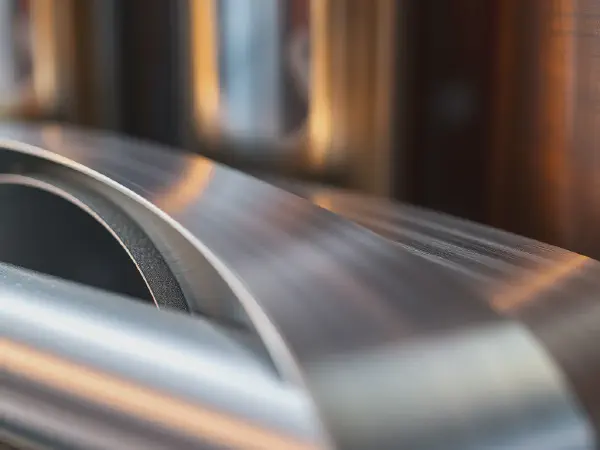Exploring Protective Metal Finishes for Durability

Understanding Protective Metal Finishes: Types, Benefits, Applications, Innovations, and Selection
Protective metal finishes are an essential aspect of metalworking and manufacturing that serve to enhance the functional and aesthetic quality of metal products. These finishes provide a barrier between the metal surface and environmental factors, offering protection against corrosion, wear, and tarnish. By applying various techniques and coatings, manufacturers can significantly improve the longevity and performance of metal components, making them a crucial consideration for industries ranging from automotive to aerospace.
There are numerous types of protective metal finishes available, each with unique properties and applications. They include electroplating, powder coating, anodizing, paint coatings, and galvanization. Each of these methods provides distinct advantages depending on the intended use and environment in which the metal will be operational. Understanding the specific characteristics of these finishes can help manufacturers and consumers make informed decisions about the optimal protection for their metal products.
To enhance durability and aesthetics, many industries rely on innovative Protective metal finishes that resist corrosion and wear.
In addition to a variety of finishing techniques, protective metal finishes offer an array of benefits that can impact both performance and cost savings. These finishes enhance the durability and lifespan of metal components, providing substantial corrosion resistance, which is especially vital in harsh environments. Aesthetically, they can elevate the visual appeal of products, making them more marketable. Furthermore, with reduced maintenance needs, organizations can save on long-term operational costs while achieving better product performance.
The applications of protective metal finishes are vast and diverse. In the automotive industry, finishes protect vehicle parts from corrosion and wear, thus ensuring safety and functionality. Similarly, in construction, coatings enhance the durability of structural materials. Electronics rely on protective finishes to safeguard sensitive components. Marine applications demand high corrosion resistance due to exposure to saltwater. Furthermore, artistic uses in sculptures and decorative metalwork benefit from the application of innovative finishes, elevating both beauty and resilience.
Innovations in protective metal finishes continue to evolve, leading to enhanced performance and sustainability in the industry. Nanotechnology has introduced new possibilities for creating more effective and resilient coatings. Additionally, eco-friendly and sustainable finishes are gaining popularity, as they address environmental concerns. The development of smart coatings with self-healing properties demonstrates the potential for future advancements, allowing for ongoing protection against damage. Trends in custom finishes for branding also highlight a growing demand for personalization in metal products.
Types of Protective Metal Finishes
Electroplating techniques involve depositing a layer of metal onto a workpiece using an electrical current. This process not only enhances the appearance of metal but also adds protection against corrosion and wear. Different metals such as chrome, nickel, and gold can be used during the electroplating process, depending on the desired finish and functional properties required.
Powder coating is a dry finishing process that uses finely ground particles of resin and pigment. It is applied electrostatically and cures under heat, creating a tough, durable surface that is resistant to chipping, scratching, fading, and wearing. Powder coating is popular for its versatility and environmental benefits, as it generates less waste than traditional wet painting methods.
Anodizing is an electrochemical process that thickens the natural oxide layer on the surface of metals, particularly aluminum. This process enhances corrosion resistance, surface hardness, and aesthetic appearance by providing a wide range of colors and finishes. Anodized surfaces are also less prone to wear and tarnish, making them ideal for both functional and decorative applications.
Paint coatings for metal protection involve applying paint or liquid coatings that adhere to the metal surface. These coatings can range from basic enamel and acrylic to advanced formulations containing corrosion inhibitors. Paint coatings provide an extra layer of protection, improve aesthetics, and can be tailored to meet specific environmental conditions or regulatory standards.
Galvanization is a process that involves coating iron or steel with a layer of zinc to protect against corrosion. The zinc acts as a sacrificial anode, which means it will corrode before the underlying metal does. This method is commonly used in outdoor and marine applications for its durability and effectiveness in rust prevention.
Benefits of Protective Metal Finishes
One of the primary benefits of protective metal finishes is the enhancement of metal durability and lifespan. By applying these finishes, the underlying metal is better equipped to withstand wear and tear, extreme temperatures, and other stressors that can lead to degradation over time.
Protective metal finishes often provide substantial corrosion resistance, a critical feature for metals exposed to moisture, chemicals, or harsh environments. These finishes create a barrier that prevents corrosive substances from reaching the metal surface, thus prolonging its service life and maintaining structural integrity.
Beyond functional advantages, protective metal finishes contribute to aesthetic enhancement. Finishes can add color, texture, and shine to metal products, making them more appealing to consumers and increasing their market value. The enhanced appearance can also contribute to a brand's identity or image.
Reducing maintenance costs is another significant benefit of protective metal finishes. With surfaces that resist damage and degradation, organizations can minimize the frequency and cost of maintenance or replacement, ultimately leading to savings over time.
Improved surface adhesion for coatings is another advantage, as properly finished metal surfaces provide better bonding for paint, adhesives, or other coatings. This improved adhesion contributes to overall product performance and longevity by preventing delamination or peeling.
Applications of Protective Metal Finishes
In the automotive industries, protective metal finishes are vital for shielding parts from corrosion and wear, ensuring that vehicles remain safe and operational over their lifespan. The automotive sector utilizes various finishes to enhance aesthetic appeal and performance, including undercoating and electroplating processes for components.
Protective finishes are equally important in construction materials, where they protect structural elements from environmental factors and longevity. Coated metals resist rust, corrosion, and degradation, which contributes to the overall safety and durability of buildings, bridges, and other infrastructures.
Electronics require protective finishes to safeguard sensitive components from moisture, dust, and corrosion. Various methods, including conformal coatings and electroplating, are used to preserve the integrity of electrical devices, enhancing their performance and lifespan.
Marine applications rely heavily on protective finishes to combat corrosion from saltwater exposure. Coatings such as marine-grade paints and galvanization are commonly employed to protect vessels, docks, and equipment, ensuring they withstand harsh marine conditions.
Artistic uses in sculptures and decorative metalwork showcase the versatility of protective metal finishes. Artists often use coatings to enhance visual appeal and ensure the longevity of outdoor sculptures. These finishes preserve the artwork's integrity while allowing for creativity and expression.
Innovations in Protective Metal Finishes
Nanotechnology in metal finishing has created remarkable advancements, allowing for thinner, more effective protective layers. These nanoscale coatings provide enhanced barrier properties and resistance to deterioration, which is especially valuable in specialized applications like electronics or aerospace.
Eco-friendly and sustainable protective finishes are becoming increasingly important as industries prioritize environmental responsibility. Innovations in non-toxic coatings and sustainable practices help reduce the ecological footprint associated with metal finishing processes, providing effective protection without harming the environment.
Smart coatings with self-healing properties represent a cutting-edge innovation in protective metal finishes. These coatings can detect damage and environmentally respond by healing themselves, thus maintaining protection without the need for manual intervention or repair.
Advancements in powder coating technologies have led to more efficient application processes, greater durability, and expanded color options. As the demand for high-performance finishes grows, so do the developments in this area, offering products that meet the stringent standards of various industries.
Trends in custom finishes for branding emphasize personalization and branding in protective metal finishes, allowing companies to enhance recognition through unique finishes. Custom colors, textures, and other visual elements can be tailored to stand out in the competitive marketplace.
Choosing the Right Protective Metal Finish
When selecting a protective metal finish, several factors must be considered, including the specific environmental conditions the metal will face. Factors such as moisture, temperature extremes, chemical exposure, and mechanical stress play a crucial role in determining the most suitable finish for a given application.
Understanding adhesion and compatibility is critical when selecting finishes. The chosen protective finish should bond well to the metal substrate to ensure the longevity and effectiveness of the protection provided. Compatibility between the metal and finish also affects the overall performance.
Cost-effectiveness of finishing options must be evaluated, balancing initial investment against potential long-term savings from reduced maintenance and prolonged lifespan. The right choice in finishes can provide significant value, making it essential to assess both upfront and ongoing costs.
Evaluating the environmental impact of finishes is increasingly important, especially with growing emphasis on sustainability. Choosing finishes that comply with environmental regulations and have reduced ecological footprints can enhance a company's reputation and contribute to a more sustainable industry.
Finally, selecting finishes based on aesthetic values allows for creative expression while maintaining protective qualities. Factors such as color, texture, and shine can influence a product's marketability and consumer appeal, particularly in sectors like automotive, construction, and art.
